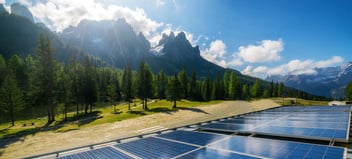Microgrids Can Improve Energy Inequality in Underserved Communities
.jpg?width=1920&height=1080&name=Untitled%20design%20(75).jpg)
Discussions of poverty and underserved communities often revolve around the absence of critical resources like food, shelter, and hygiene products. But the unequal distribution and reliability of energy also contributes significantly to disadvantages within those communities.
Energy and electricity are necessary components of a wide range of resources that improve individuals’ overall quality of life. Plus, they also give folks the tools to possibly pull themselves out of dire situations like homelessness and joblessness. Simple but critical tools like a charged phone or functional internet can make all the difference in job execution or searches as well as looking into other helpful resources like nearby food banks, healthcare services, or community gatherings.
A Connected Microgrid ®, which is a self-sustaining, reliable, and often cheaper energy option for individual communities, offers underserved areas the energy access that wealthier pockets of the country (and the world) now take almost entirely for granted. As energy continues to become a commodified resource, rendering it more expensive and incentivizing its exclusivity, microgrids offer a solution to not only stem the resulting inequality, but also to increase the resilience of energy systems throughout the country.
Connected Microgrids can be customized to the needs and usage patterns of specific communities. They offer access to areas often overlooked by traditional energy services, and because they can operate independently from the traditional power grid, they also provide resilience and stability in the event of natural disasters (which, if you haven’t noticed, seem to be more and more frequent, lately). Connected Microgrids also use and generate renewable energy, which improves general air quality and eliminates or reduces the negative impacts of more conventional energy sources like fossil fuels.
Climate change on a macro level creates and will continue to create seismic inequality between the citizens of the world based on wealth, geography, natural resources, and the political positioning that results from the confluence of those other three factors. But empowering communities with their own reliable energy source not only mitigates the impacts of that inequality, it also slows its spread.

.jpg?width=352&name=Untitled%20design%20(73).jpg)

